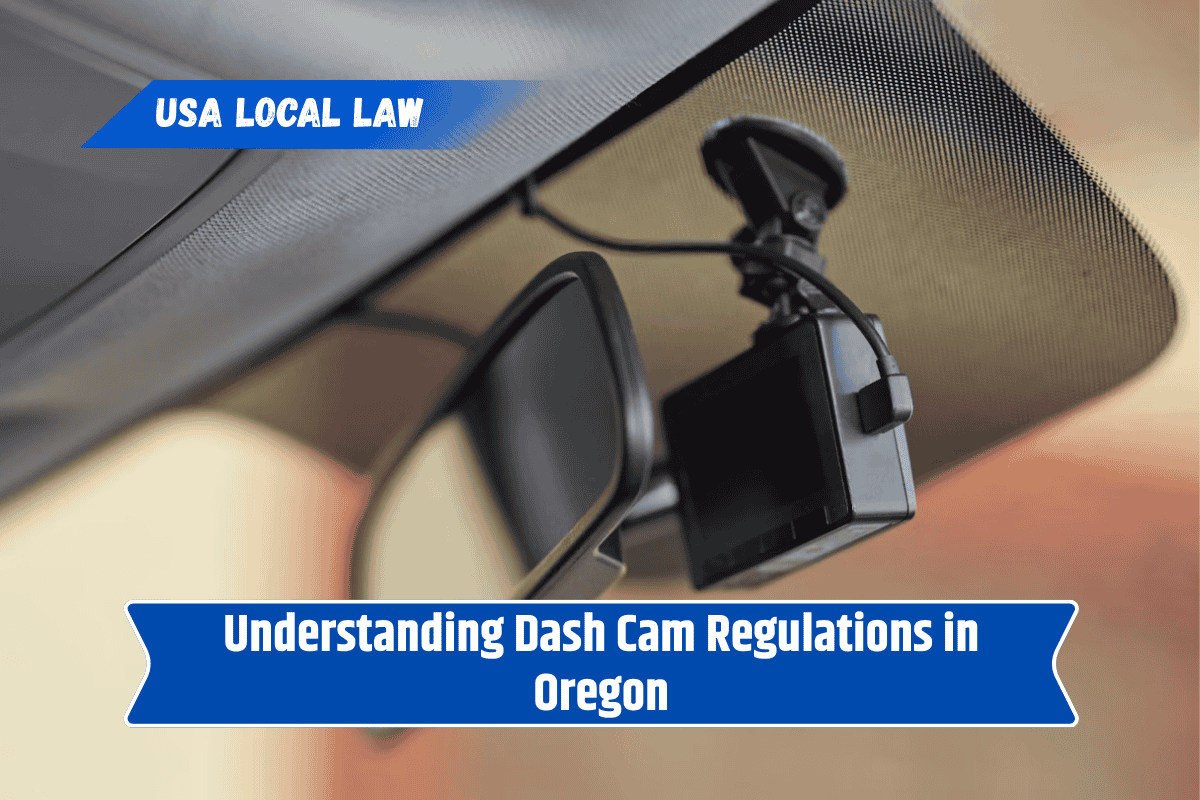Dash cams have become popular among drivers in Oregon as a way to record traffic incidents, protect against false claims, or capture scenic drives. But before you mount one on your windshield, it’s important to know what Oregon law says about dash cams.
Using one the wrong way could land you in legal trouble—even if your intentions are good. Here’s what you need to know about dash cam regulations in Oregon.
Are Dash Cams Legal in Oregon?
Yes, dash cams are legal in Oregon. Drivers are allowed to install and use dash cameras in their personal or commercial vehicles. However, the state has specific laws that regulate where you can place the camera, what it records, and how that footage can be used.
So while using a dash cam is legal, you must follow certain rules to stay on the right side of the law.
Windshield Mounting Rules in Oregon
One of the main things Oregon law focuses on is driver visibility. A dash cam cannot be placed in a way that obstructs the driver’s view of the road.
According to ORS 815.220, drivers are not allowed to have anything on the windshield that blocks their line of sight, unless it falls within certain limited areas. In general:
Dash cams must be mounted in the lower corner of the windshield, usually on the passenger side.
The device should not interfere with airbags or distract the driver.
Avoid placing the dash cam in the center of the windshield or in front of the driver’s seat.
Some people choose to mount their dash cams on the dashboard instead of the windshield to avoid legal issues altogether.
Audio Recording Laws in Oregon
Oregon is a “one-party consent” state when it comes to recording conversations. This means:
You can record audio as long as at least one person in the conversation consents.
If you’re involved in the conversation, you’re the one person who consents.
However, secretly recording private conversations inside your car, especially if passengers aren’t aware, may lead to legal problems.
To stay safe:
Inform passengers that there’s a recording device in the car.
Put up a small sign or sticker that says “Audio and Video Recording in Progress.”
This is especially important for rideshare drivers, delivery workers, and taxis.
Using Dash Cam Footage as Evidence
Dash cam footage is often used as evidence in accidents or court cases. In Oregon, this footage can be submitted as long as:
It’s clear and unedited
It shows a relevant event, like a crash or traffic violation
The time and date stamp are accurate (if applicable)
Police officers, insurance agents, and lawyers may all review the footage if there’s a legal dispute.
However, footage that violates privacy laws—like secretly recorded conversations—may be ruled inadmissible.
Can Employers Use Dash Cams in Commercial Vehicles?
Yes, but with strict rules. If a business installs dash cams in company vehicles:
Employees should be notified in writing.
Cameras recording inside the cabin should respect worker privacy—especially during breaks or off-duty hours.
Audio recording in commercial vehicles must also follow Oregon’s one-party consent rule.
Some commercial dash cams use dual-facing cameras (road and cabin view), which are legal but must be disclosed clearly to drivers.
Tips for Using a Dash Cam Legally in Oregon
To make sure you’re following the law and protecting your rights:
Mount the dash cam in a non-obstructive spot on your windshield or dashboard.
Inform any passengers that audio and video are being recorded.
Regularly check that your camera is working properly and has space to record.
Avoid sharing footage of private conversations or license plates online without permission.
Dash cams are completely legal in Oregon, but how and where you use them matters. As long as your camera doesn’t block your view and you follow the state’s one-party consent rule for recording audio, you should be in the clear.
Dash cam footage can be a powerful tool in protecting yourself on the road—just make sure you’re using it responsibly and within legal boundaries.
